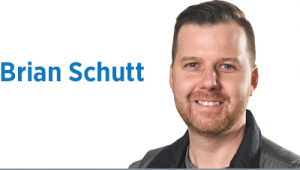Subscriber Benefit
As a subscriber you can listen to articles at work, in the car, or while you work out. Subscribe Now Indiana has a demography problem that can be curbed, in part, through innovation in immigration policy, but leaders must act fast.
Indiana has a demography problem that can be curbed, in part, through innovation in immigration policy, but leaders must act fast.
First, why do demographics matter? The maxim that “demography is destiny” is a useful heuristic in understanding the future of a particular area. While population growth is not without its detractors, many correlate a growing population with many upstream positives like healthy residents, growing birth rates, economic growth and job opportunities.
But while Indiana has had nearly uninterrupted demographic growth since 1800, one expert who looked at Indiana’s historical and projected demographic data for the Indiana GPS Project in 2020 believes there’s a short window to ensure that trend continues this century.
“Policymakers in Indiana have about five—and no more than 10—years remaining to decide their demographic future. Action now can make Indiana a hub of growth in a Midwestern region where every other state faces inexorable decline,” demographer Lyman Stone said.
Declines in mortality and fertility while in-migration stays constant are the factors behind the projected population decrease beginning in the late 2030s.
It’s on migration and immigration that leaders and policymakers should devote a focused effort.
Beyond merely helping fill the population gap, a 2022 study published in the American Economic Review titled “Immigration and Entrepreneurship in the United States” found that, “per capita, immigrants are about 80% more likely to found a firm, compared to U.S.-born citizens. Those firms also have about 1% more employees than those founded by U.S. natives, on average.”
A program idea called Heartland Visas, born out of the Washington, D.C.-based Economic Innovation Group, could provide a framework to attract a new supply of skilled immigrants.
The idea would target counties impacted by things like population decline (41% of U.S. counties) and prime-age workforce decline (80% of U.S. counties) and would be voluntary. According to authors, the idea is “a new visa that would connect skilled immigrants to communities that want and need them. Eligible communities would opt-in to hosting visa holders, who would provide a much-needed injection of human capital and entrepreneurial vitality into parts of the country that retain considerable economic potential.”
According to Stone’s analysis, most of Indiana would fit EIG’s criteria, with 79 of the 92 counties projected to be static or losing population of over 20% by 2070.
Another similar concept from EIG fills a more acute need. Called “The chipmaker’s visa,” it recognizes that “talent is a barrier to scaling up chipmaking,” and that “growing the skilled domestic workforce takes time but increases in chipmaking talent are needed immediately.”
With the LEAP District construction underway, the $32.9 million CHIPS Act funding to Silicon Crossroads Microelectronics Commons Hub, and a robust pipeline of technology-focused investments, Indiana’s highly specialized workforce needs will quickly outpace our colleges’ and universities’ ability to produce the labor supply.
EIG’s chipmakers’ visa proposes that the United States issue 10,000 new visas per year for 10 years with an expedited path to a Green Card to dramatically ramp up the kind of semiconductor industrial capacity that exists only in a few pockets of the world.”
While there’s no silver-bullet solution for the impending demography challenges, Indiana should lead the way in welcoming the best and brightest from across the world as a critical first step.•
__________
Schutt is co-founder of Homesense Heating & Cooling and Refinery46 and an American Enterprise Institute civic renewal fellow. Send comments to [email protected].
Click here for more Forefront columns.
Please enable JavaScript to view this content.
